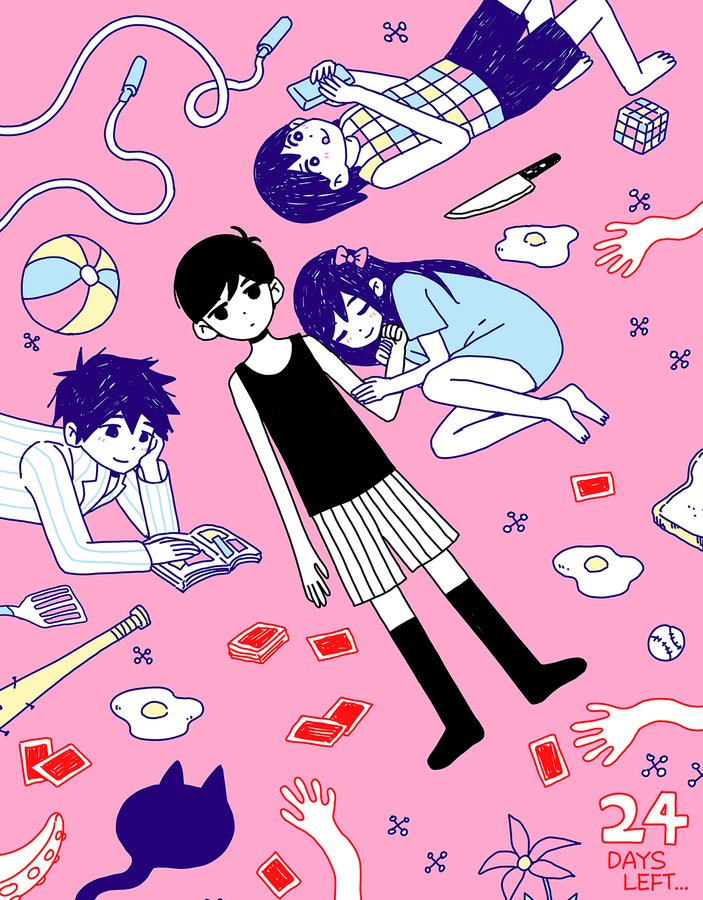
It is in these exchanges, interspersed with side quests like working part time as a grocery store fly-swatter or saving up to buy comic book store memorabilia, that we discover the events that contribute to Omori’s retreat into seclusion in both worlds. As luck would have it, Omori is able to reunite with his friends, catching each other up on the last four years they spent apart. We enter the real world three days before Omori is set to move out of his hometown. The architecture of the Dream World, we discover, is inspired by familiar faces, interactions, objects, and landmarks from Omori’s reality. Once finally acquainted with both the Dream World and Headspace, we are introduced to Omori’s reality bit by bit, a parallel in many ways to the world he has constructed in his mind. With quirky chance encounters and plenty of potential combinations of special abilities, followups, and items, there is enough novel and amusing content to keep combat engaging for the most passionate gamers. In tag-teaming attacks with Omori, for example, Aubrey is shown texting him and, upon getting a lukewarm “thumbs up” response, being filled with feelings of love and hitting her enemies where it hurts (their hearts). The colorful, hand-drawn animations of combat, from attacking sketchbook-like sprites to the individualized animations of abilities like Headbutt, Twirl, and Annoy, add a childlike flair to the gameplay. A core mechanic is “following up” on your friends’ attacks, working together to deal extra damage to enemies, as well as triggering different emotional states to have special, stat-modifying advantages. By being in touch with their own, and each other’s, mental states, the children quickly learn the only way to win is to work together. In combat, the teens must learn to master teamwork as well as their own emotions, spanning from neutral to extreme emotional states like mania and misery, as the game ramps up with increasingly challenging (though never unmanageable) bosses. The game wastes no time setting the scene, telling the player: Around him are only the bare essentials: a tissue box, cat, laptop, sketchbook, and a blanket on a floor that is always cold, all illuminated by a single black light bulb. Both the comics and the game feature Omori, a young boy trapped in Headspace, a room of white.
Omori trailer series#
Omocat, a clothing artist and illustrator turned game developer, initially dreamed up Omori, an echo of the Japanese word for young male social hermits, or hikikomori, in a series of early 2010s Tumblr webcomics. While it may feel like your typical cutesy RPG Maker game, Omori succeeds in navigating deep themes of darkness, including depression and anxiety, in the haunting and beautiful delusions its protagonist creates to escape his reality. The game, in its charming 8-bit pixel and hand-drawn sketchbook styles, offers a glimpse into the psyche of Omori, a young boy experiencing the dizzying breadth of human emotion, from joy to the depths of fear and anguish. Filled with quirky humor, characters that feel real, and tag-team emotion-based combat mechanics, Omori is a genre-bending RPG that is not only cute and imaginative, but a sit-on-the-edge-of-your-seat thriller well worth the wait. You’ll be the first to know when the playable demo is available.After shattering its 2014 Kickstarter fundraising goal tenfold in a matter of days, the surrealist psychological horror RPG Omori finally released on Christmas Day, 2020. Teaser trailer for new top-down horror RPG If you like to stay up to date on the development of the upcoming game Sea Of Trees, please leave your email address here. However, even if they’re ignorant to some of the games’ themes, it’s not something you want them to see until they’re older. It’s something you can get them when they’re older and can handle the themes. This game could potentially give nightmares to younger children. The heavy content might be even too much for the steel-hearted adults. Omori has subject matter that the cute cartoon aesthetic can’t cover-up. However, it’s the upsetting graphical imagery that can get a little rough, even for adults.


There are a couple of traditional jump scares (as you would find with any psychological-horror game). While most of the game is cute and wholesome, the rest of the game is very disturbing.


 0 kommentar(er)
0 kommentar(er)
